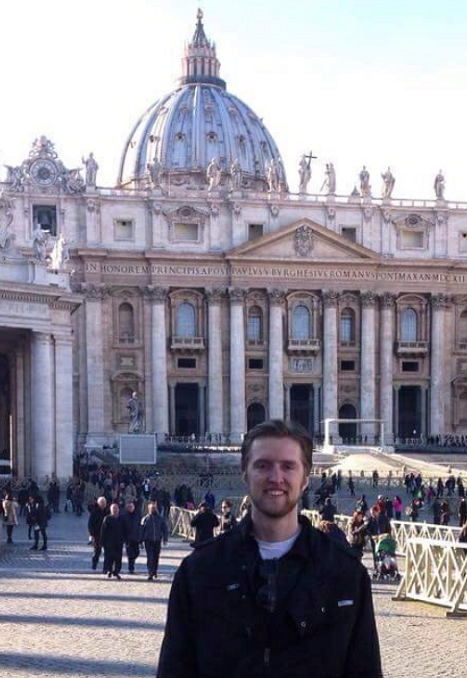Early Years of the Minneapolis Fire Department and Its Repair Shop
 Sunday, August 1, 2021 at 3:23PM |
Sunday, August 1, 2021 at 3:23PM |  Michael Rainville Jr |
Michael Rainville Jr | Article by Michael Rainville, Jr.
Long before the Minneapolis Fire Department was established in 1879, volunteer firefighters were in charge of quelling fires. St. Anthony established their volunteer force in 1847, and the west side of the river did the same in 1851. Six years after St. Anthony merged with Minneapolis, the Washburn-Crosby Company A-Mill exploded in 1878, leveling the surrounding area. With the rise of lumber and flour milling and the dangerous consequences of both, the volunteer firefighters on both sides of the river joined forces. Just a year later, the volunteers requested that the City of Minneapolis replace them with paid professionals, and the Minneapolis Fire Department was created, led by Chief Winslow Brackett.
Starting as an on-call force with two horse-drawn steamers, one ladder truck, six hose companies, and seven stations, the new department grew quickly. In the 1880s, Minneapolis expanded by over twenty-two square miles, and the lack of construction standards meant that the fire department had a lot of work on their hands. Mayor Ames and the City Council approved Minneapolis’ first building codes in 1884, which required new buildings to have non-combustible walls, cornices and roofs, and the position of building inspector was also created to ensure compliance.
 1925 photo of the shop interior.
1925 photo of the shop interior.
 Photo taken in 1979 of the 1922 addition.
Photo taken in 1979 of the 1922 addition.
Throughout the 1880s, the department added ten more stations, twenty-nine more vehicles of various uses, and their own water tower. With all of this equipment, the need for a dedicated space for repairs was obvious. The first shop opened in 1890, was located behind Station 1 in downtown, and consisted of a machine room, blacksmith, woodworking shop, harness shop and hose storage. Even though the city continued to expand and grow in population, the fire department never saw an increase in their funding. An external report completed by the National Board of Fire Underwriters lambasted the City Council for their unacceptable administrative role and recommended the city invest in new stations and facilities.
In 1909, as the City Council worked to provide more funding, Chief James Canterbury paid a $100 down payment on a $6,000 property along First Avenue NE between University and Second Street. As the city began looking for potential sites for a new, much larger repair shop, Chief Canterbury gave his cousin Sarah Guile $200 to offer his newly acquired property to the city for $9,000, or over $260,000 after inflation. This was a problem. Not only did Chief Canterbury expect to make a profit of $8,700, which would have led to firefighters not receiving pay in November and December, but other people of power were also well aware. Many council members, the city attorney, and the chief were all implicated.
Chief Canterbury apologized and resigned. Shortly after, the investigation was complete and found that he took $3,000 from the City of Minneapolis. The City Council told the public the truth about why there was a possibility of no pay for two months, and the firefighters of Minneapolis and the citizens they served were not happy. Once this land speculation scandal had cleared, construction of the new repair shop at 24 University Avenue NE began and was completed in late 1909.
 Photo of the shop along University taken in 1936.
Photo of the shop along University taken in 1936.
The new shop was designed by the local architect firm Downs & Eads and employed twenty-five men permanently assigned to the shop. A year later, another external survey was done and found even more problems with equipment, buildings and staffing than before. The chief at the time, Charles Ringer, ushered in a new era for the fire department, improving and expanding every aspect of the force. The most impactful change was the switch from horse-drawn vehicles to motorized. By 1916, over one-third of the department’s vehicles were now motorized, which saved an estimated $4,600 per rig a year, or over $70,000 after inflation.
 1979 photo of a used car business that occupied the former repair shop site.
1979 photo of a used car business that occupied the former repair shop site.
The repair shop expanded in 1922 to include a designated building to construct motorized vehicles at 222 First Avenue NE. In total, the shop converted forty-eight vehicles from 1910 to 1926. Once Chief Ringer retired in 1933, the shop stopped converting vehicles and was mainly used for repairs until it was closed down in 1960. The site has had various uses since, from a workout gym and used car business, to an event center and restaurants. It was also placed in the National Register for Historic Places in 2005 for its civil architecture and for the role it played in updating and advancing the Minneapolis Fire Department.
- - - - - - - - - - - - - - - - - - - - - - - - - - - - - - - - - - - - - -
 About Michael Rainville, Jr.
About Michael Rainville, Jr.
A 6th generation Minneapolitan, Michael Rainville, Jr. received his B.A. in History, Graduate Certificate in Museum Studies, and M.A. in Art History from the University of St. Thomas.
Michael is also a lead guide at Mobile Entertainment, LLC, giving Segway, biking, and walking tours of the riverfront for 9+ years.
He can be reached at mrainvillejr@comcast.net.
